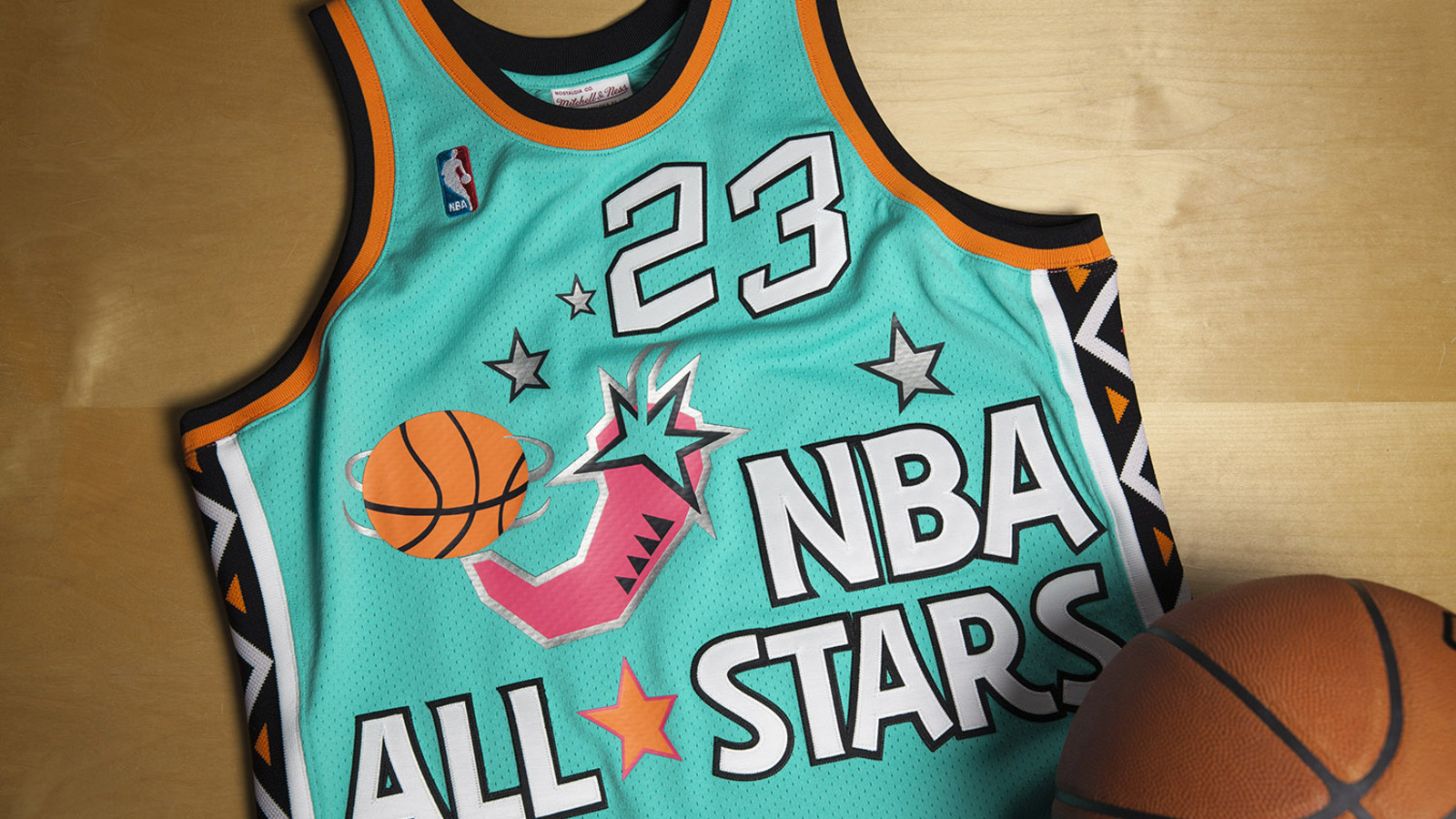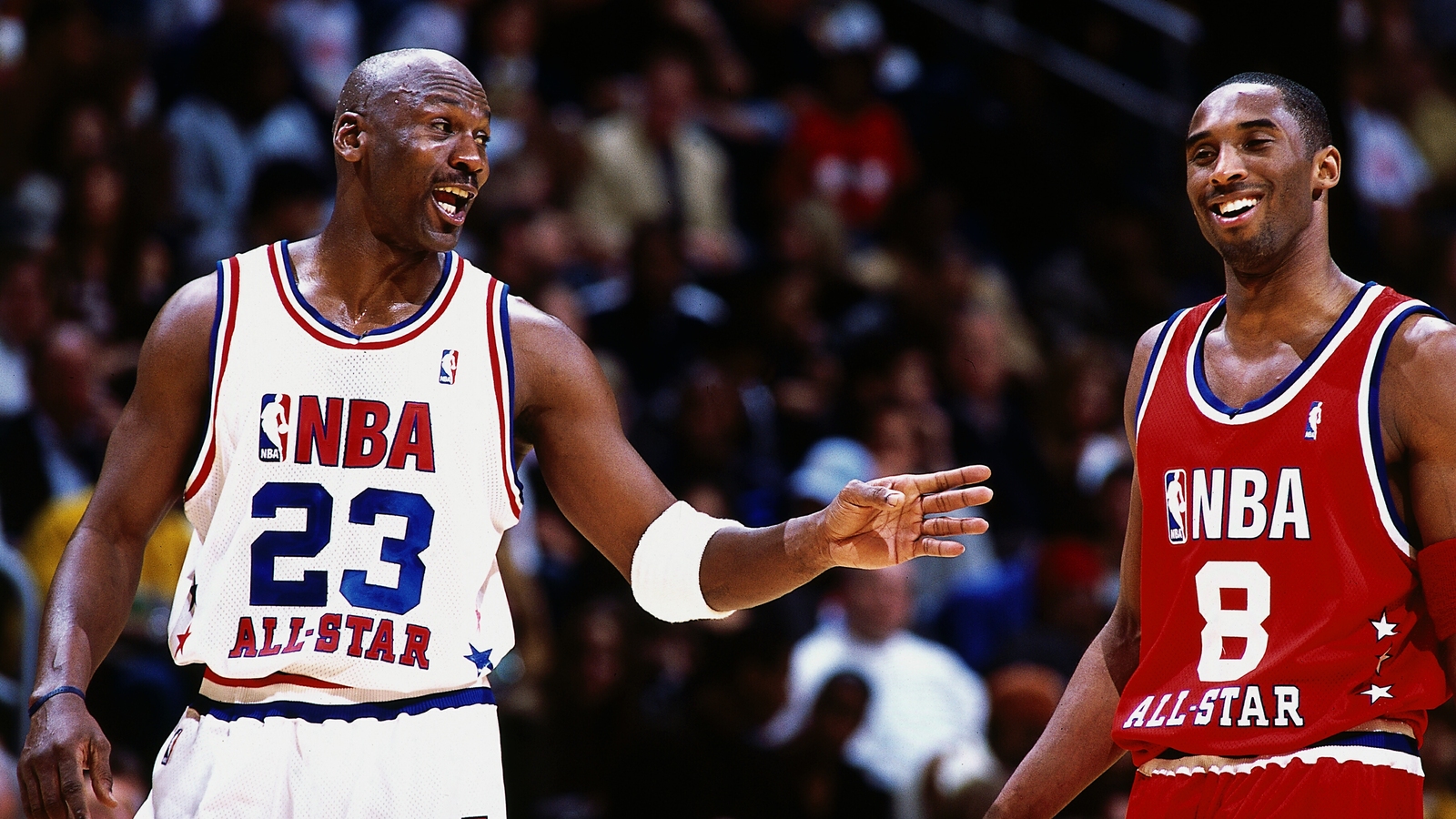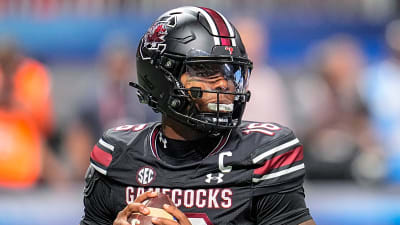
The Aesthetic: NBA All-Star Game jerseys
The official 2017 @NBAAllStar uniforms have been unveiled. Thoughts? pic.twitter.com/75TmGy8yAV— SLAM Magazine (@SLAMonline) January 5, 2017
NBA All-Star jerseys have evolved through the years, with each change reflecting larger style and fashion trends at the time. In the very first NBA All-Star Game held in 1951 at the Boston Garden, players wore blank blue and white jerseys, a simplistic design that didn't challenge the conventions of what a sports uniform would look like. The jerseys were less of a style statement but more about the uniformity of the apparel.

The early 1980s brought upon the first set of inspired All-Star uniform designs. All-Star Game uniforms featured a Stars and Stripes theme that felt like a step above previous jersey designs, which were understated in nature.

By the late 1980s, the league appeared more comfortable to once again apply the theme of uniformity to their All-Star jerseys. From 1986 to 1992, the league kept the same uniforms for the game: a simple red, white and blue aesthetic with the words "NBA ALL-STAR" adorning the front of the jersey alongside a very visible NBA logo with the player's number on it.

The 1990s represented the most ambitious phase in jersey designs for the NBA. The Pistons wore teal jerseys, the Hawks wore a red-and-black outfit with a giant hawk on the front, the expansion Raptors went with a purple theme and featured a dinosaur prominently on the first iteration of their jerseys. Whether it was the teal and purple of the Charlotte Hornets, or the pinstriped jerseys of the Orlando Magic, uniformity gave way to a uniqueness across the league. Each jersey stood on its own merits, even if the general feedback was mixed.
This spilled over into the All-Star Game jersey designs. The 1993 and 1994 All-Star game jerseys was a modern day update on the standard uniforms from the last half decade. The addition of the silver lettering went a long way to moving these jerseys towards a more aesthetically pleasing direction.

But nothing could prepare for what was next. In 1995, with the All-Star Game in Phoenix, a cacti was featured on the front of the purple uniforms. It began a trend jersey designs being a reflection of where the game was actually held.

The trend continued in 1996. With the All-Star game held in San Antonio, these were the most ambitious All-Star jerseys yet, a teal body with a southwest inspired design that has become one of the most popular throwback jerseys among the ones released by retailer Mitchell & Ness.

William Warren Jr., a marketing coordinator in his 30s at Mitchell & Ness, calls it his favorite all-time NBA All-Star jersey. "'95 took it to another level," Warren Jr. says. "But '96 took it to another galaxy." For Warren Jr., the nostalgia and attachment of those jerseys was representative of everything that was happening that year, from Jay-Z releasing his debut album "Reasonable Doubt," to Michael Jordan wearing the Columbia 11s at the All-Star game, to the release of "NBA Live '96." It was also the first All-Star Game Jordan played in after returning from his first retirement.

"In retrospect, that jersey, those Jordan's, the video game, the actual All-Star Game being the first year Jordan was back for an entire season — if you were a sports fan, it was life changing," Warren Jr. says. The jersey designs of the '90s have been mocked and featured on worst jersey designs ever slideshows everywhere, but Warren Jr. disagrees. In his opinion, the demand for these throwbacks two decades later shows a staying power with these designs. "It seems like the '90s fashion era is where it's at," he says. "That's trendy right now. (But) how long does something last before it's just accepted and it's not just a trend?"
After 1996, the NBA did away with All-Star jersey designs completely, having players wear their own team uniforms to play in the game from 1997-2002 before returning in 2003 with a traditional design that was a nod to the 1980s.

Since then, the jerseys have been tweaked each season, with different fonts and variations of the red, white and blue color schemes, but none of the recent All-Star jersey designs have approached the ambitions of the mid-90s. Another question worth asking: Do we grow attached to a particular All-Star jersey because of the design elements, or because of the basketball memories we associate with them?
The '92 jersey will always be iconic because it was Magic Johnson making a comeback at the All-Star Game after announcing his retirement after contracting HIV, and winning MVP honors with 25 points in the game, including a signature three-pointer in the closing seconds:
Another favorite All-Star game memory is from 2001, when Allen Iverson and Stephon Marbury led a classic fourth quarter comeback to propel the East to victory. This was one of the years when the NBA eschewed any jersey designs and had players wear their own uniforms. You have to wonder what the throwback demand for a 2001 Allen Iverson All-Star game jersey would be if one existed.
For Warren Jr, the throwback jerseys are meant to appeal to younger fans because of the design, but also to educate them on what happened during those All-Star games. "It's about you remembering," Warren Jr. says. "You need to remember how many points Jordan had in that game, because it can be lost from generation to generation. It's about making sure that people are aware that -- in my opinion -- he was the greatest of all-time. He had the dopest jerseys, he had the dopest kicks, he was the best. These kids argue about LeBron James or Steph Curry. I don't think they know about basically winning six straight championships when he played. I don't think they understand that. I don't think LeBron is winning six in a row. Even Kobe (Bryant) couldn't do it."
The future direction of All-Star jersey designs is up in the air. Nike will take over from Adidas as the official on-court apparel provider starting next season, and you have to assume they will want to make a splash with their first All-Star jersey design.
In the meantime, folks like Warren Jr. say they haven't even taken a close look at this year's jerseys. "I live in retro, man," Warren Jr. says. "I rather celebrate something that's not going to change. That's what I remember." That's the challenge that lies ahead, for jersey designers to come up with something truly memorable for future All-Star uniforms. A 70-point game from one of the All-Stars and a few other indelible memories would help too.
More must-reads:
- The best moments in NBA All-Star Weekend history
- Our love for 'viral social media' NBA players
- The 'NBA All-Star Game MVPs' quiz
Breaking News
Trending News
Customize Your Newsletter
 +
+
Get the latest news and rumors, customized to your favorite sports and teams. Emailed daily. Always free!








